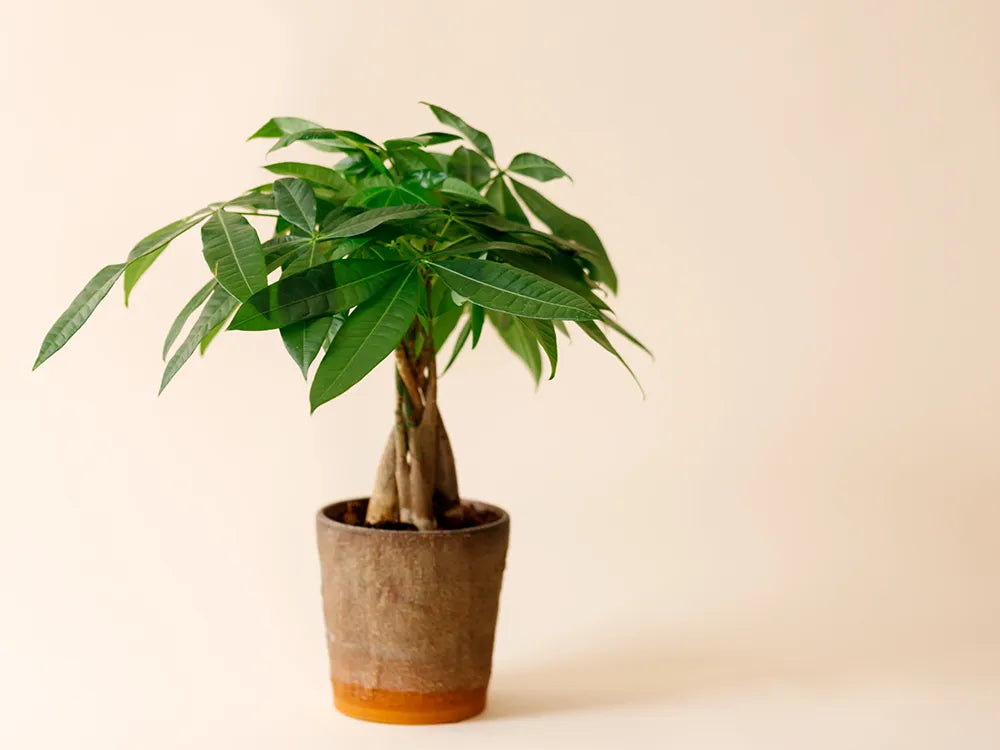At a glance
-
Light
Bright, indirect light; tolerates medium light.
-
Water
Moderate; water when top 2–4 cm of soil is dry.
-
Temperature
16–26 °C; dislikes drafts.
-
Humidity
Average household humidity is fine; enjoys a bit higher.
Care difficulty
Easy to moderate
Money Trees adapt well and forgive minor mistakes. As long as you avoid overwatering and provide enough light, they remain healthy for years. Perfect for beginners or as a symbolic, easygoing gift plant.
Detailed care instructions
-
Light
Pachira aquatica thrives in bright, indirect light, but also tolerates medium light. Avoid direct sun which can scorch leaves. Rotate the plant regularly to keep growth even.
-
Water
Water when the top 2–4 cm of soil has dried. Overwatering is the most common cause of problems.
- Water thoroughly, allowing excess to drain.
- Use rainwater or filtered water if possible.
- In winter, reduce watering frequency.
Always use pots with drainage holes.
-
Humidity
Average household humidity (40–60%) is usually sufficient. It appreciates a bit more, especially in heated rooms during winter.
- Occasional misting with distilled water is helpful.
- Pebble trays or grouping with other plants can raise humidity.
-
Temperature
Ideal: 16–26 °C. Avoid drafts, sudden changes, and temperatures below 12 °C.
-
Fertilizer
During spring and summer, feed every 4–6 weeks with a diluted, balanced liquid fertilizer. Stop feeding in autumn and winter.
-
Soil & Repotting
Use a well-draining, peat-free houseplant soil with added perlite or sand for drainage.
- Repot every 2–3 years in spring, or when roots outgrow the pot.
- Choose a pot with drainage holes.
Common problems & solutions
What you see: lower leaves turn yellow.
Cause: overwatering.
Solution: let soil dry more between waterings; check drainage.
Prevention: water only when topsoil is dry.
What you see: leaves fall suddenly.
Cause: sudden changes in light, temperature, or drafts.
Solution: move plant to a stable location.
Prevention: avoid moving frequently; keep environment steady.
What you see: tips turn brown and dry.
Cause: low humidity or inconsistent watering.
Solution: raise humidity; adjust watering routine.
Prevention: keep humidity stable; mist occasionally.
What you see: sticky residue, webbing, or cottony patches.
Solution (pet-safe): wipe leaves with damp cloth, rinse plant, or use mild soap solution; isolate if needed.
Prevention: inspect weekly, maintain humidity.
Pet safety: avoid chemical pesticides; let leaves dry before pets return.
Pachira aquatica (Money Tree)
-
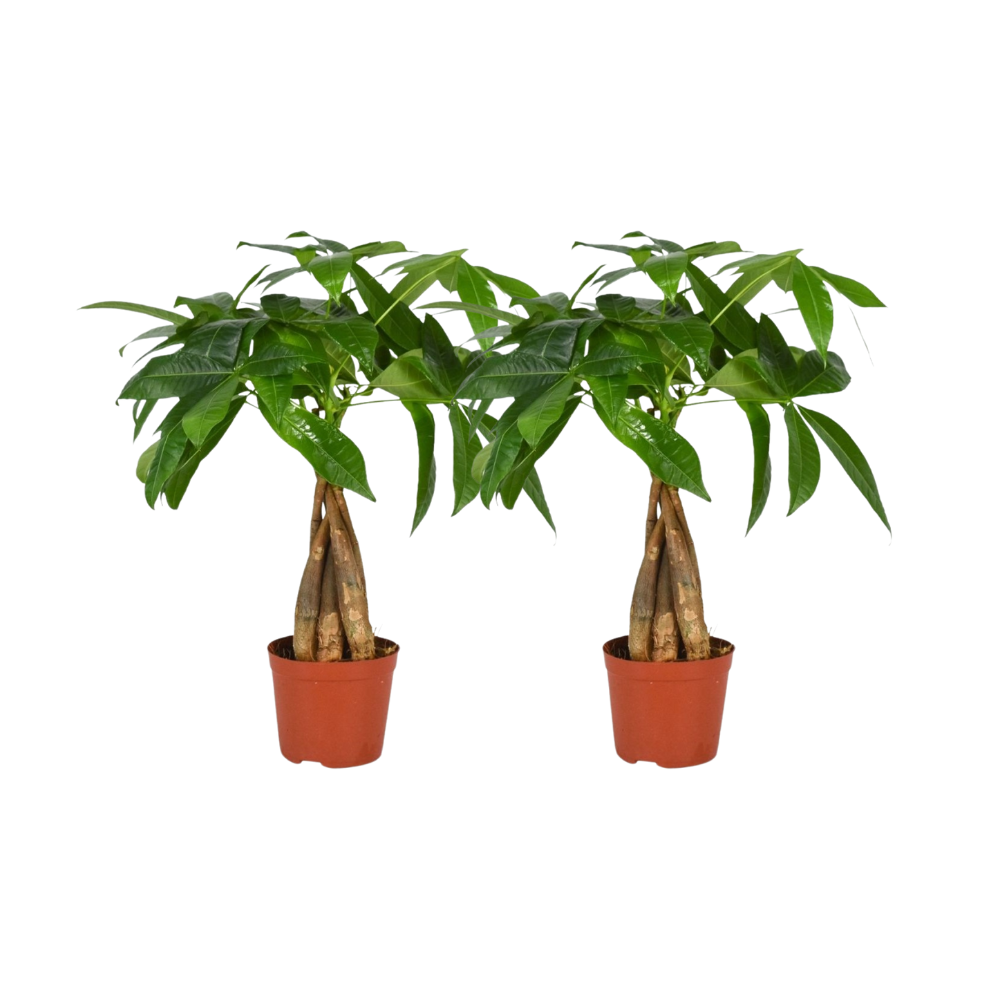

Pachira Aquatica (S) x 2 - Combo Deal
Money Tree- Regular price
- €34,95
- Sale price
- €39,90
- Unit price
- per
- 35 centimeters
- 12 centimeters pot diameter
- Cat-safe
- Dog-safe
-
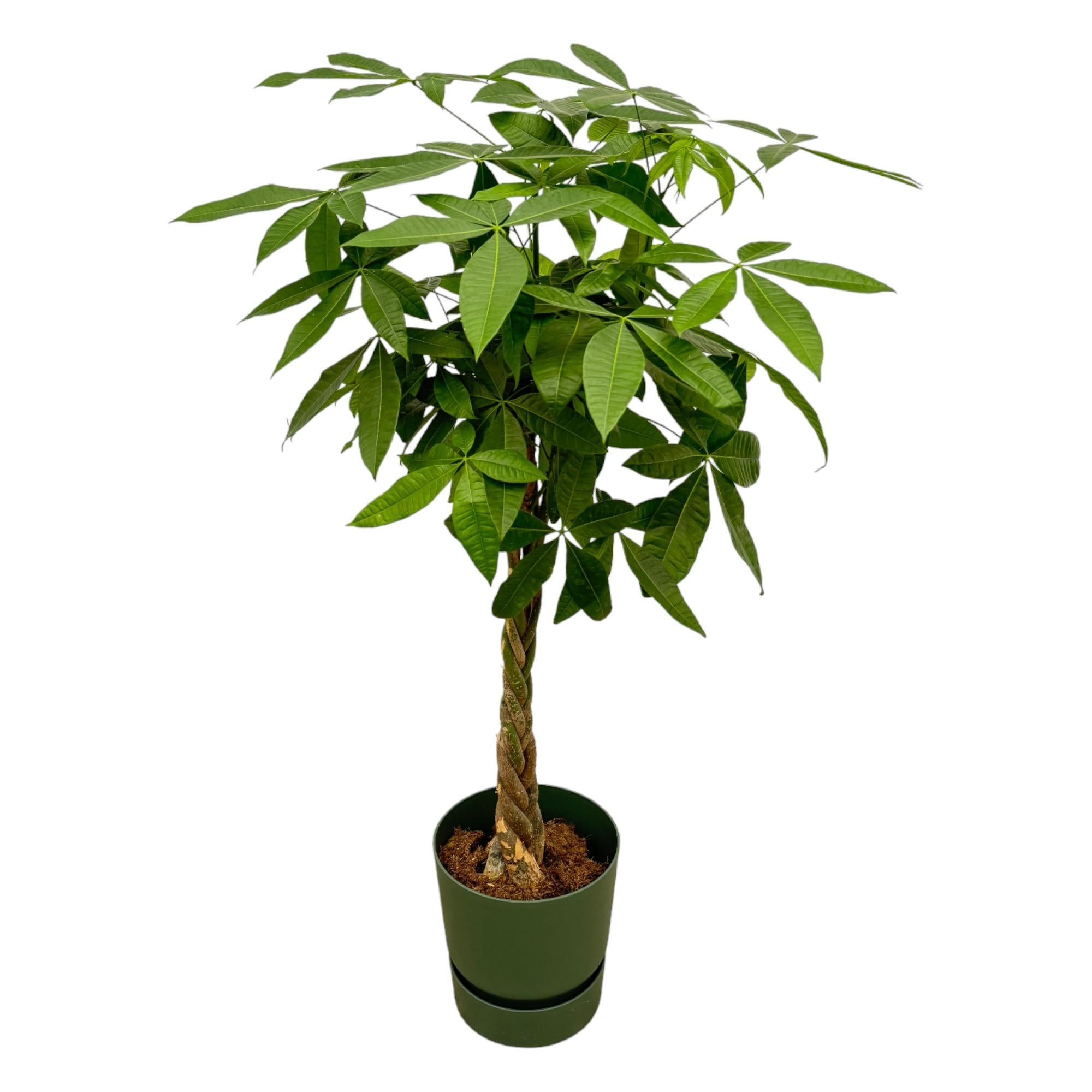

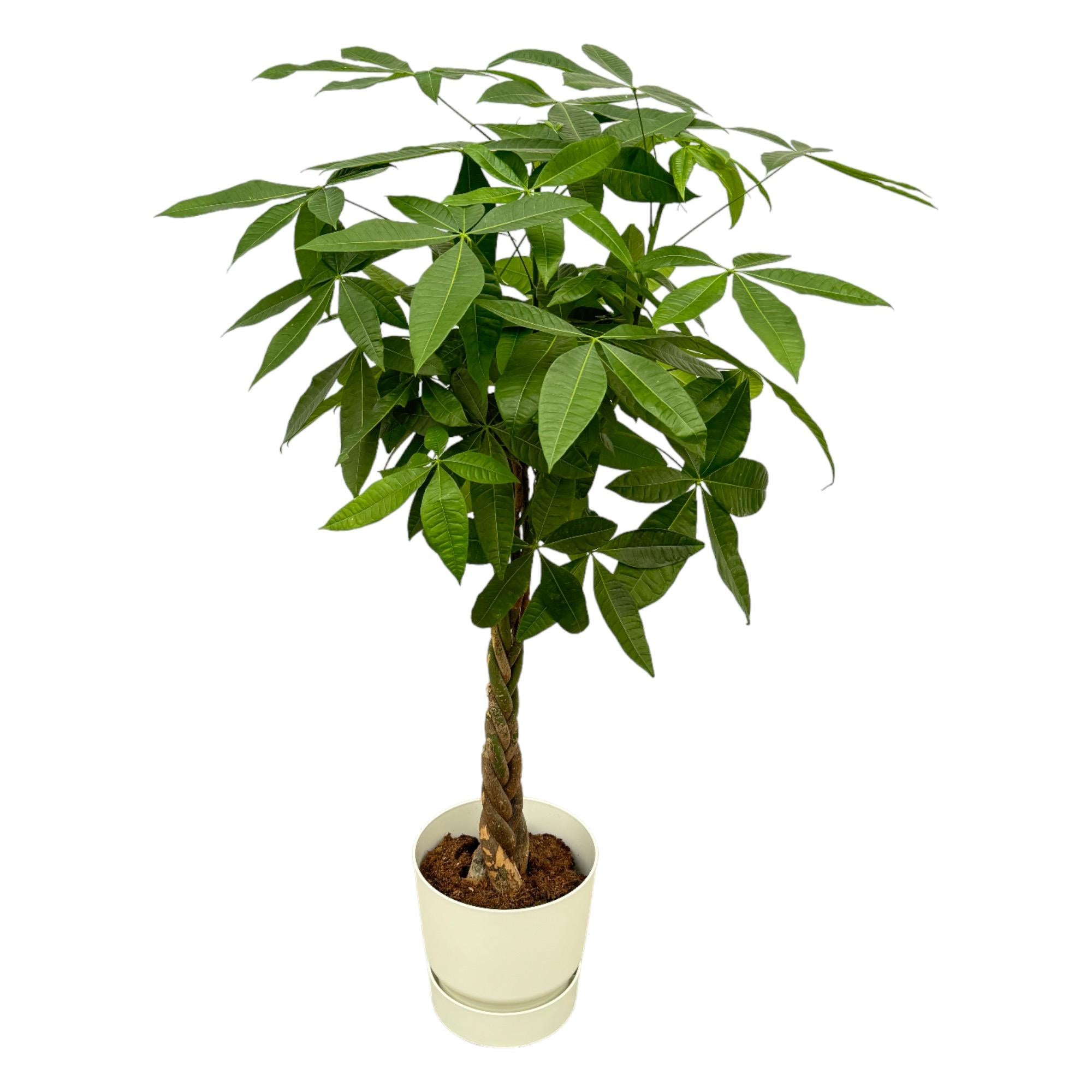
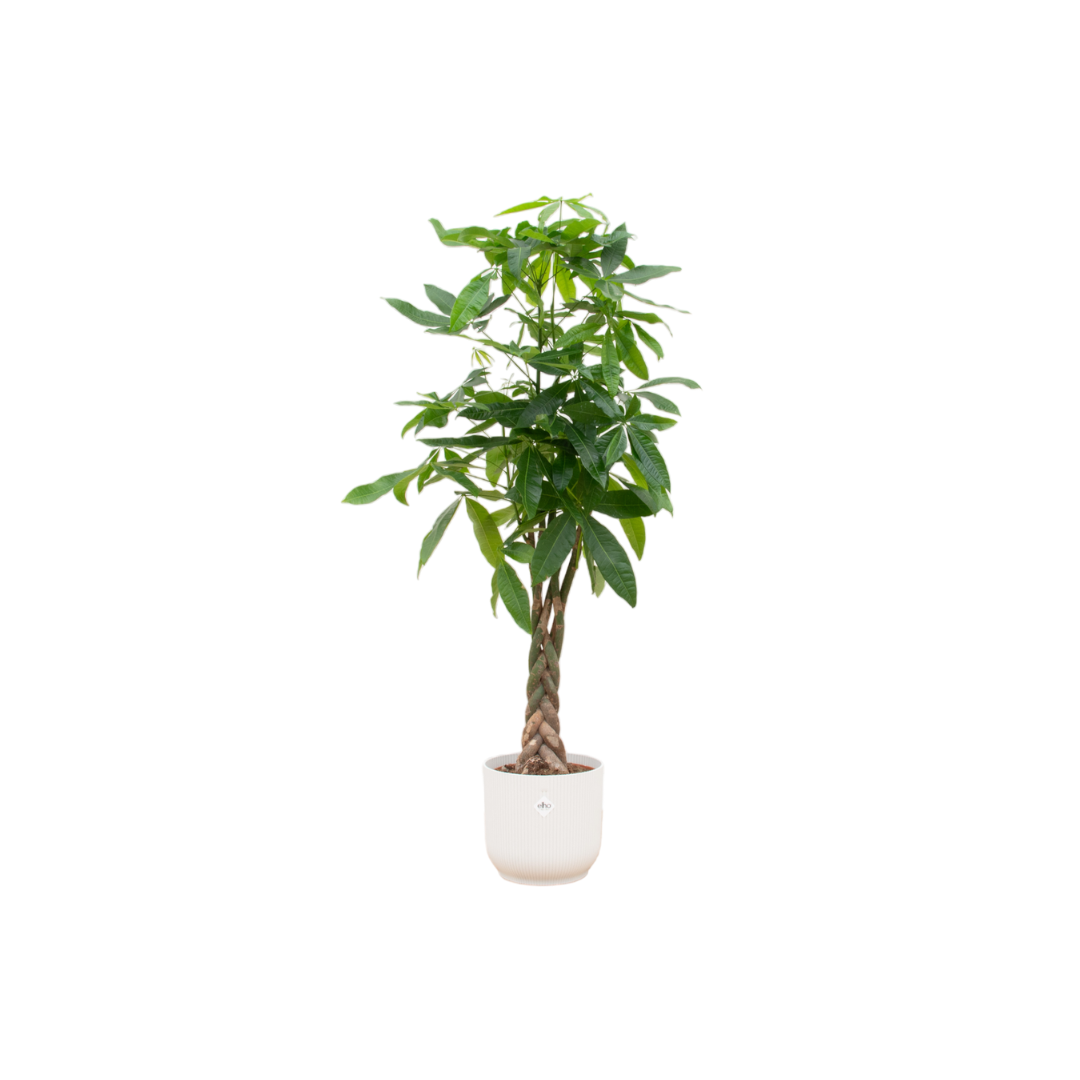
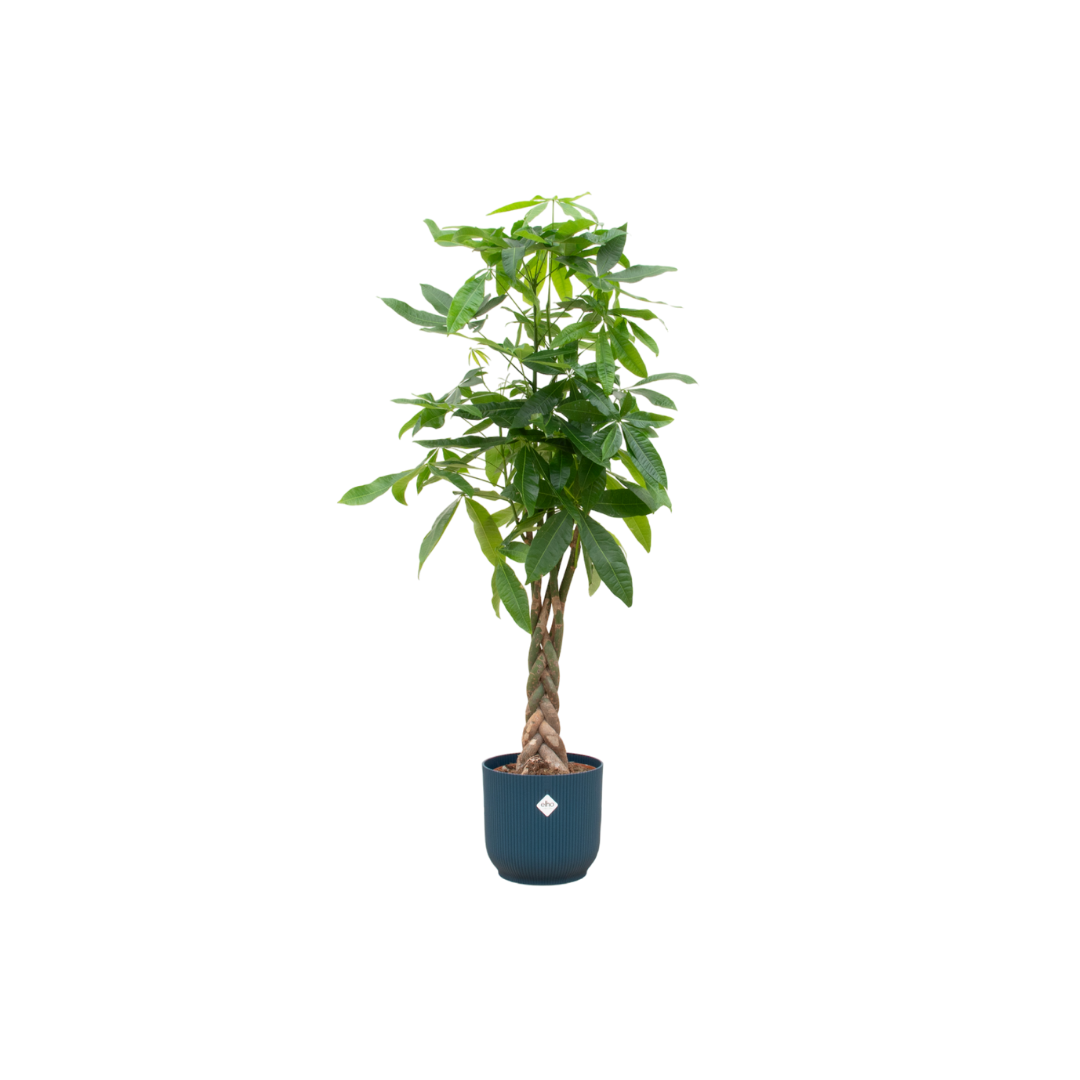
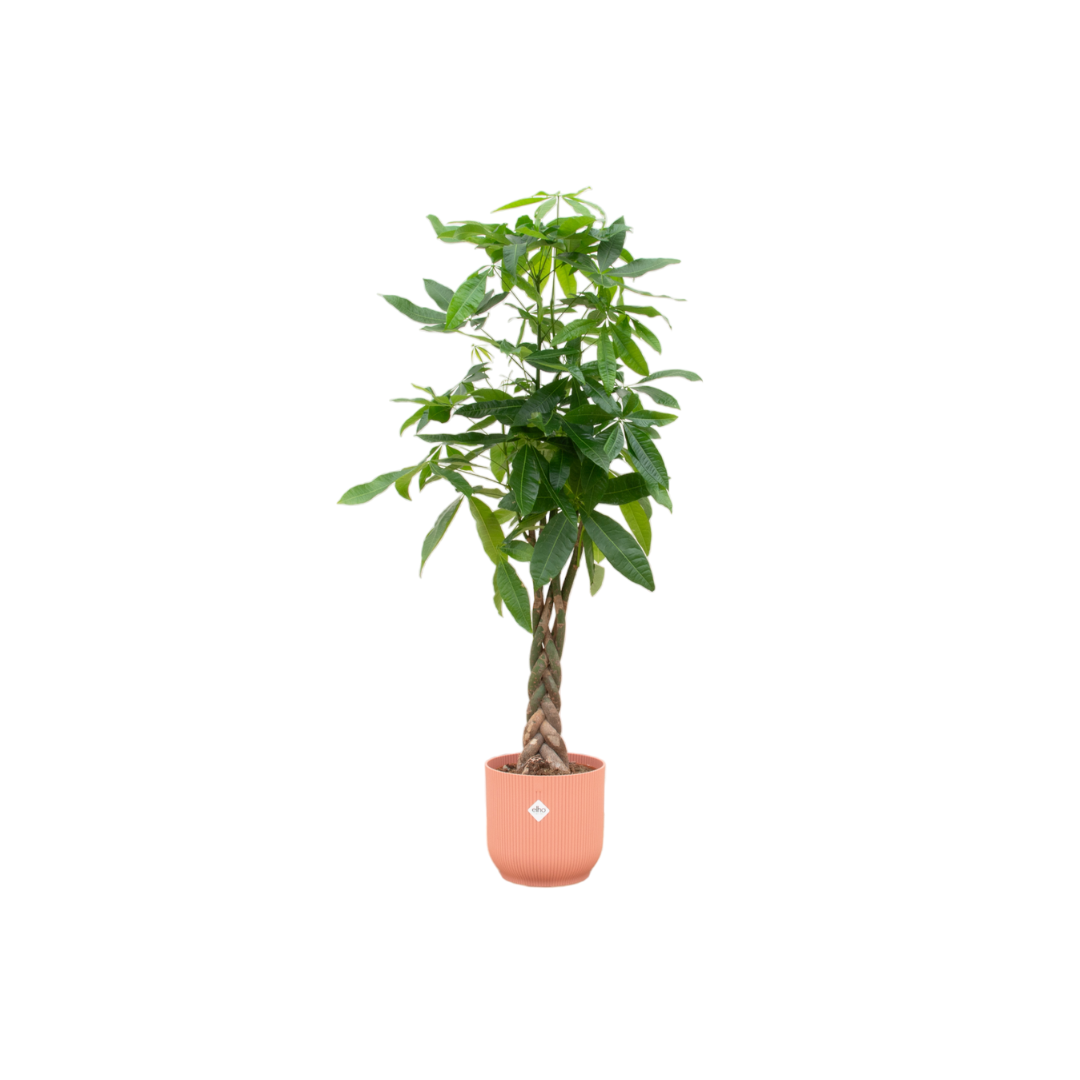
Pachira Aquatica (XXL) + Decorative Pot
Money Tree1 review- Regular price
- €110,00
- Sale price
- €119,95
- Unit price
- per
- 160 centimeters
- 30 centimeters pot diameter
- Cat-safe
- Dog-safe
-
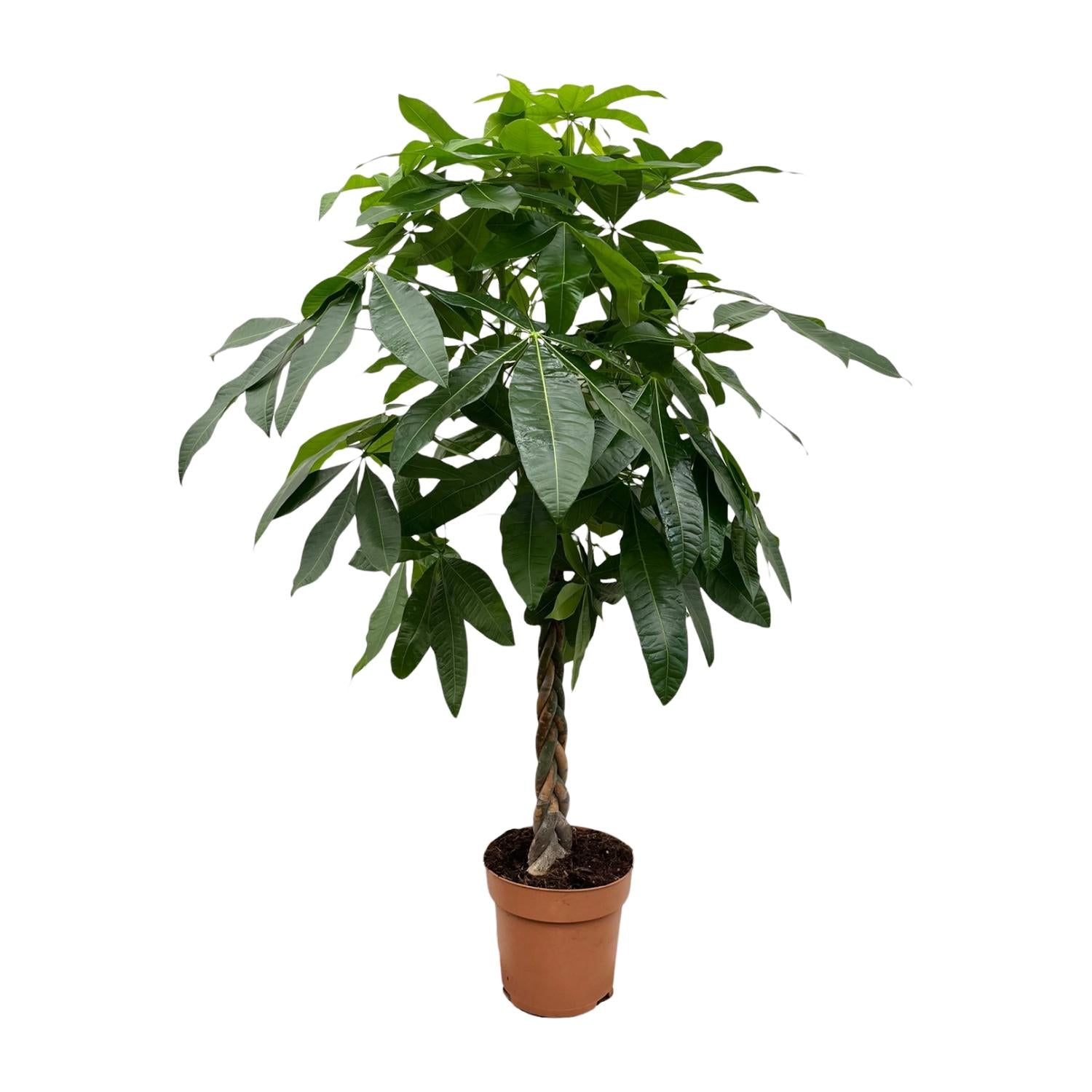
Pachira Aquatica - X-Large
Money Tree- Regular price
- €69,95
- Unit price
- per
- 150 centimeters
- 27 centimeters pot diameter
- Cat-safe
- Dog-safe
-
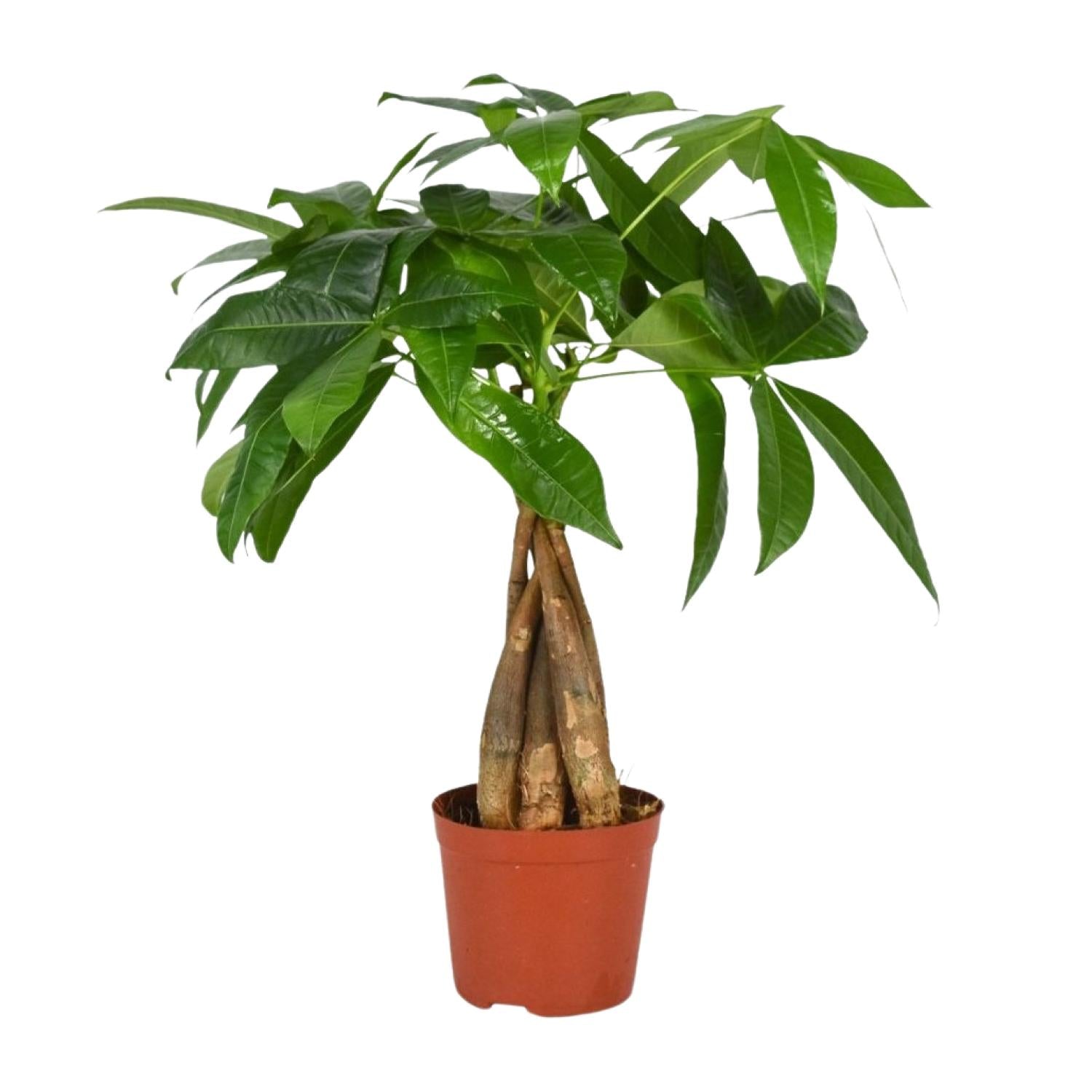

Pachira Aquatica - Small
Money Tree1 review- Regular price
- €19,95
- Unit price
- per
- 35 centimeters
- 12 centimeters pot diameter
- Cat-safe
- Dog-safe
-
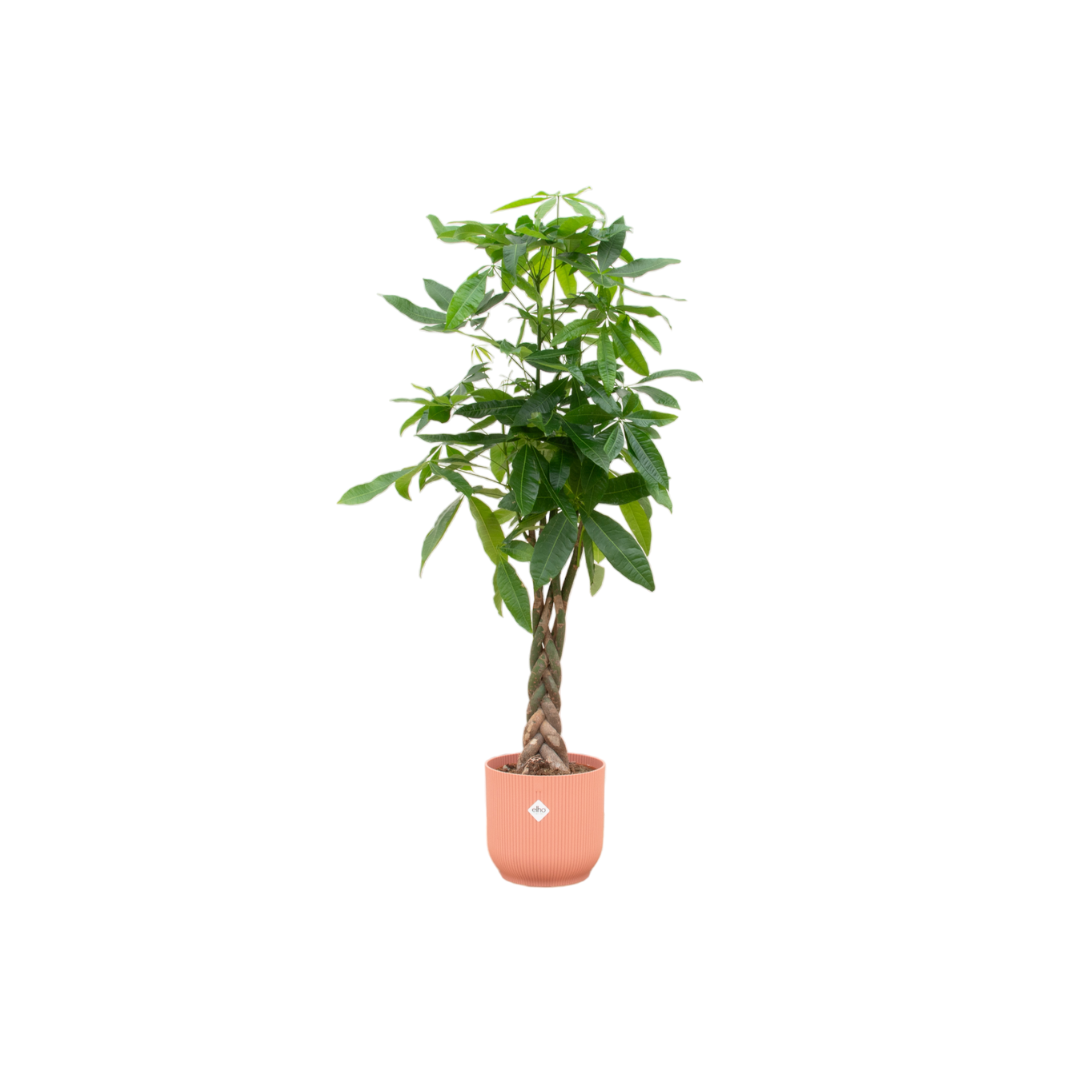

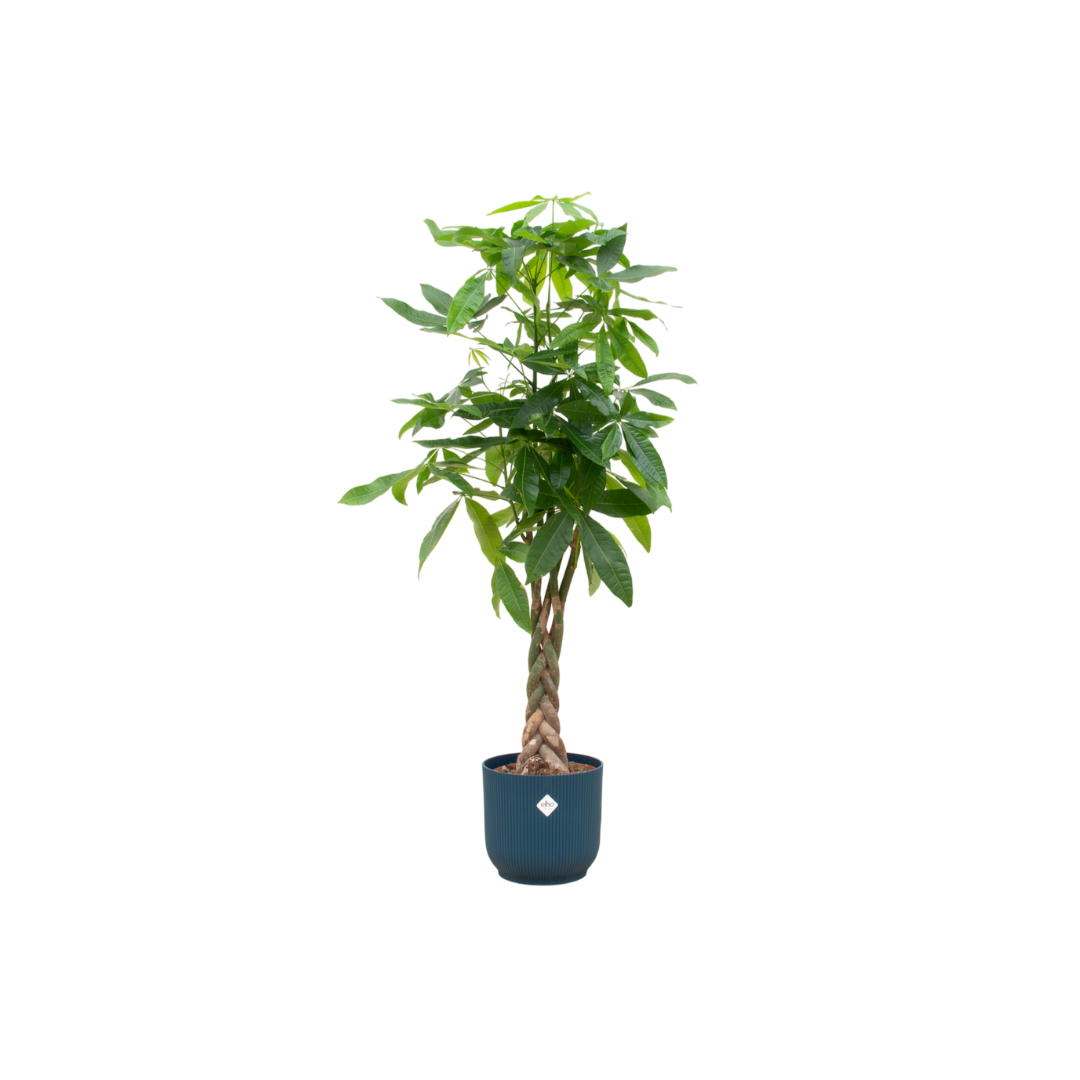
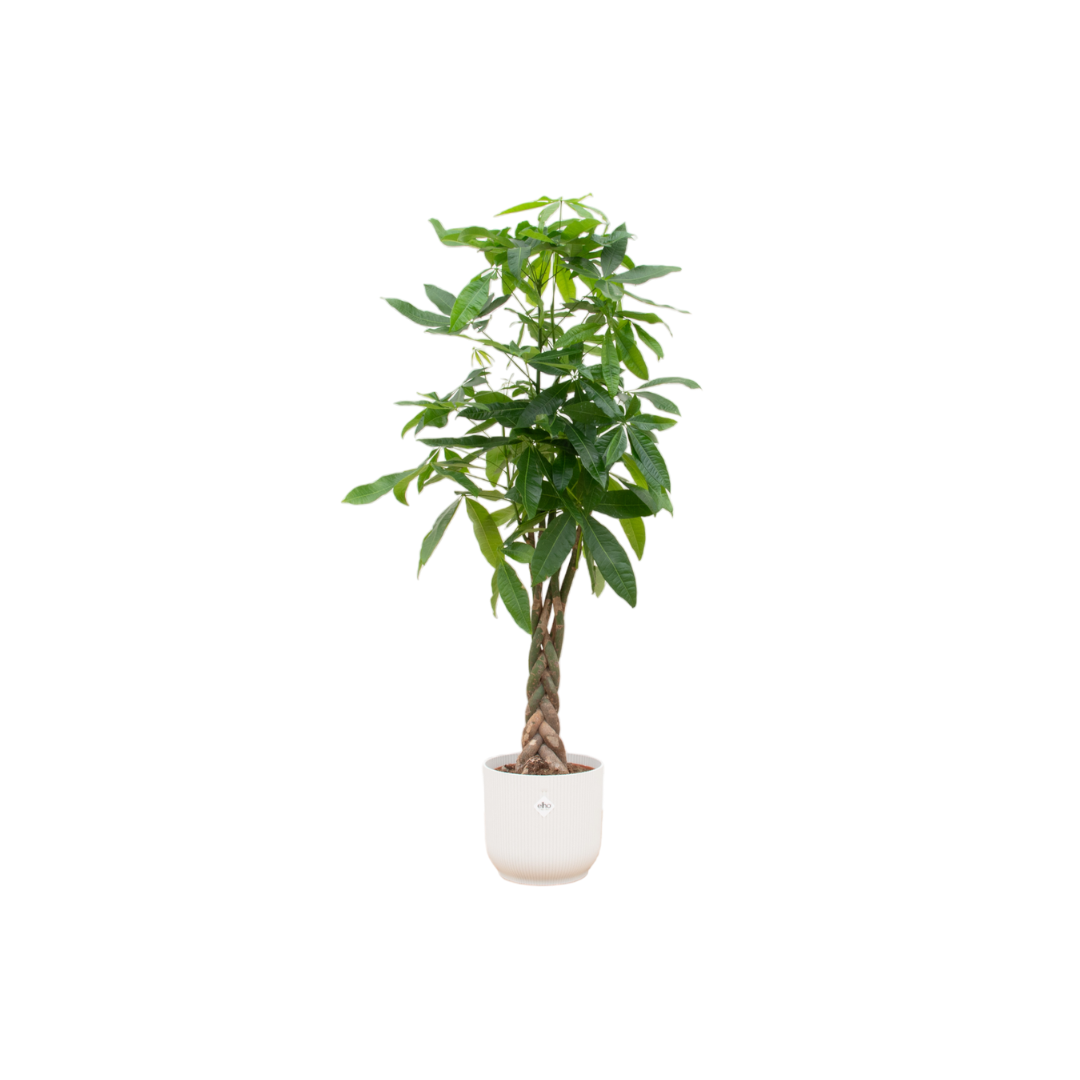
Pachira Aquatica (X-Large) + Decorative Pot
Money Tree- Regular price
- €95,50
- Sale price
- €99,95
- Unit price
- per
- 150 centimeters
- 30 centimeters pot diameter
- Cat-safe
- Dog-safe
-


Pachira Aquatica - XXL
Money Tree- Regular price
- €89,95
- Unit price
- per
- 170 centimeters
- 27 centimeters pot diameter
- Cat-safe
- Dog-safe
-
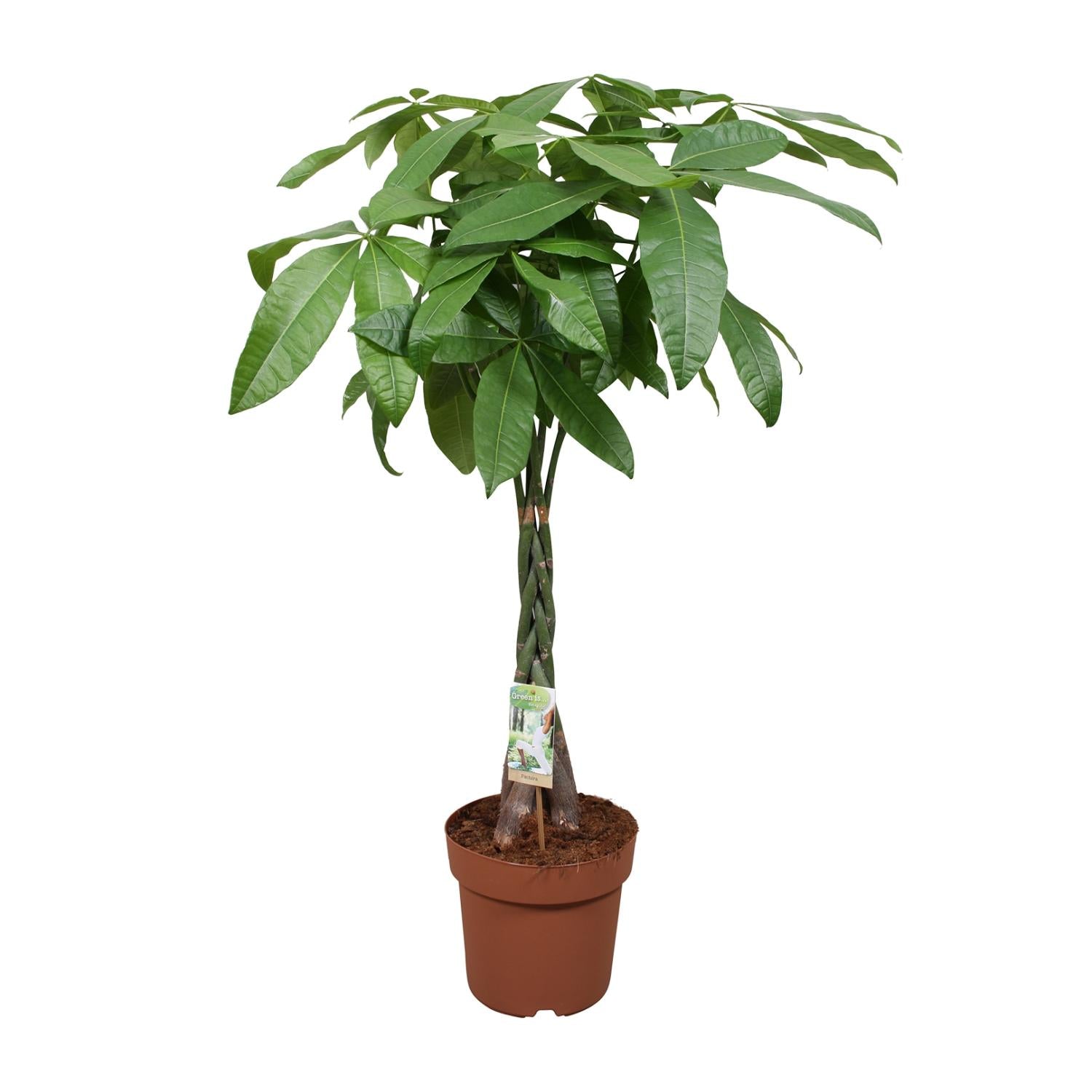

Pachira Aquatica - Large
Money Tree- Regular price
- €59,95
- Unit price
- per
- 120 centimeters
- 12 centimeters pot diameter
- Cat-safe
- Dog-safe
